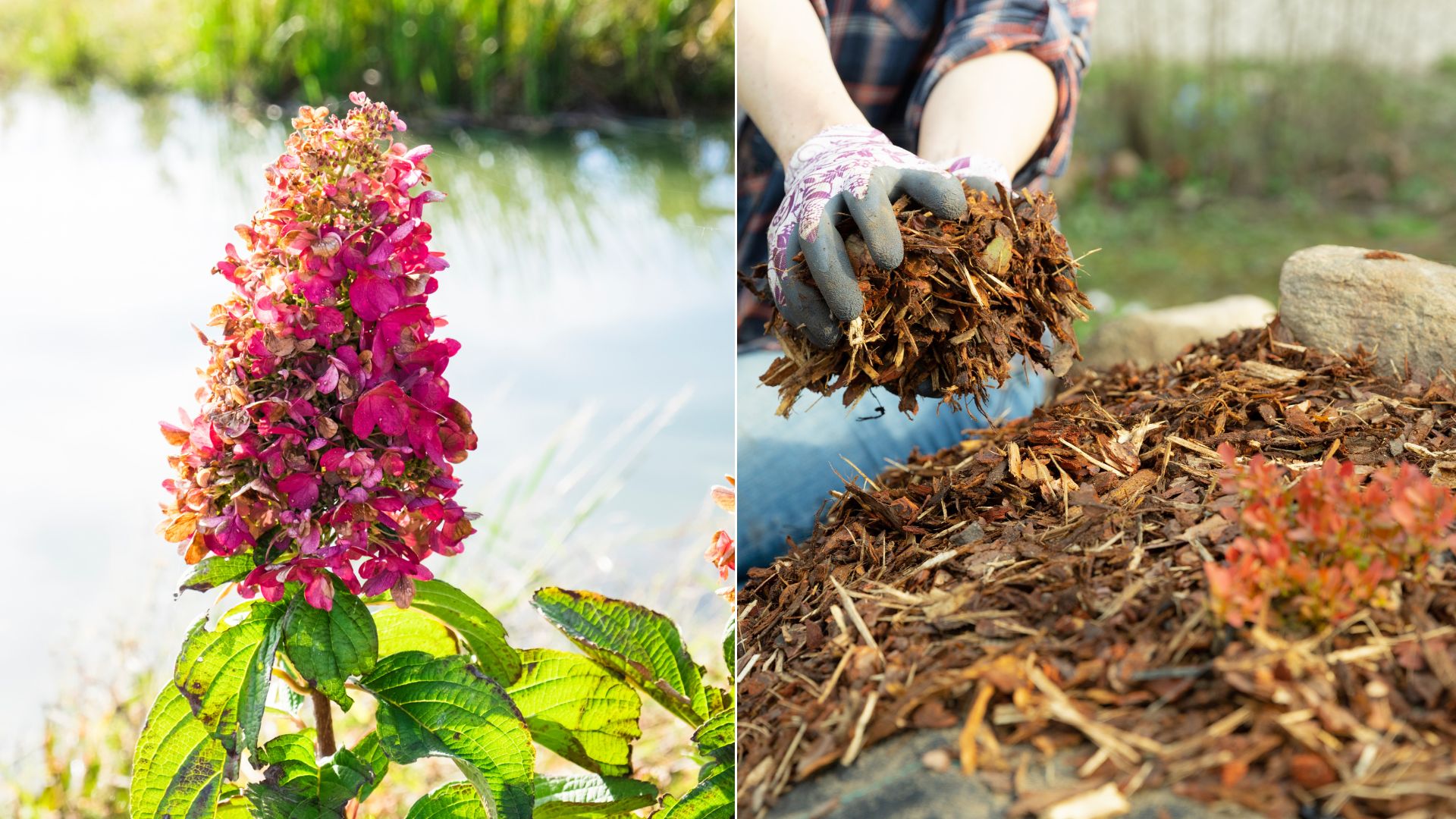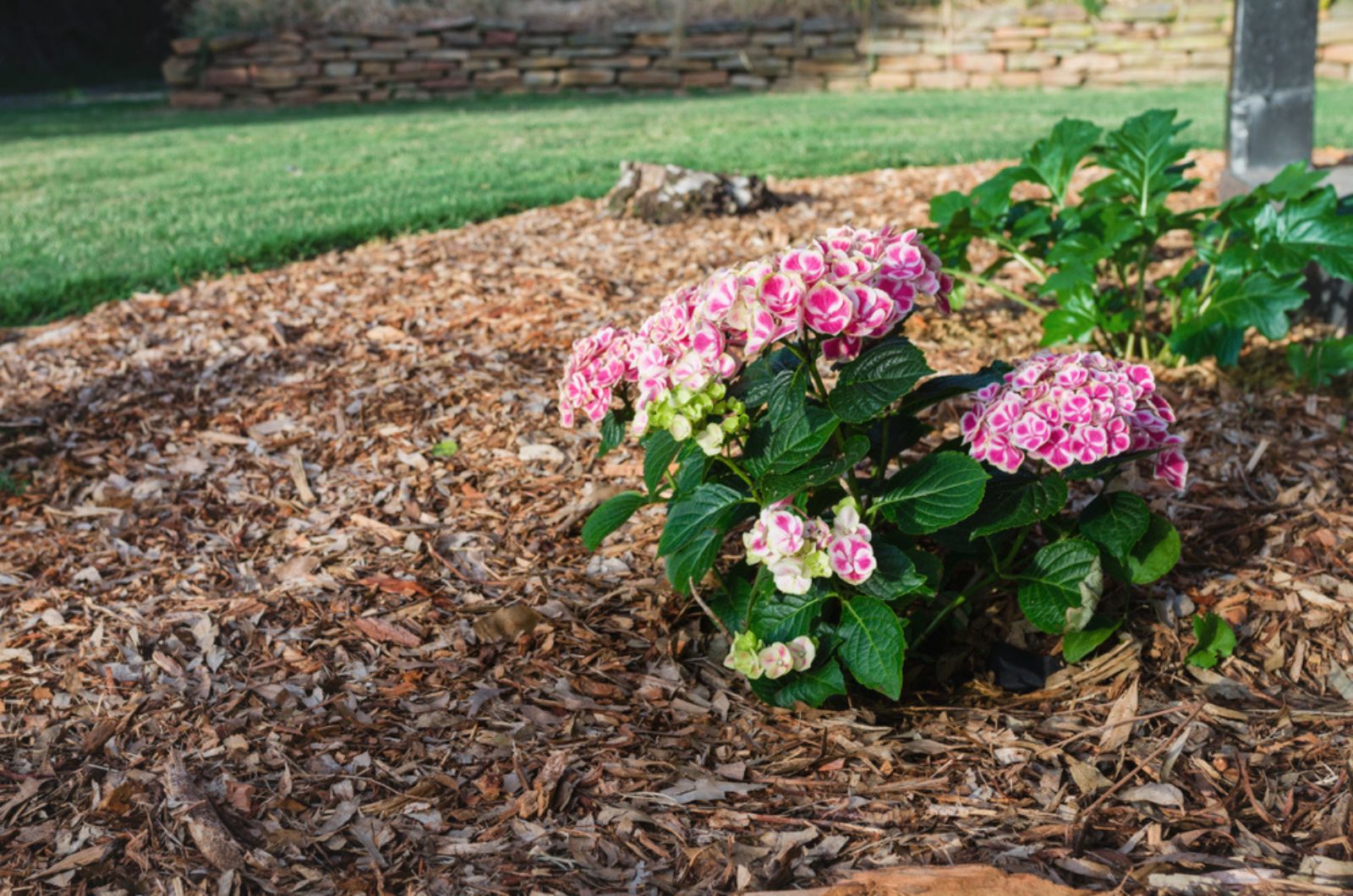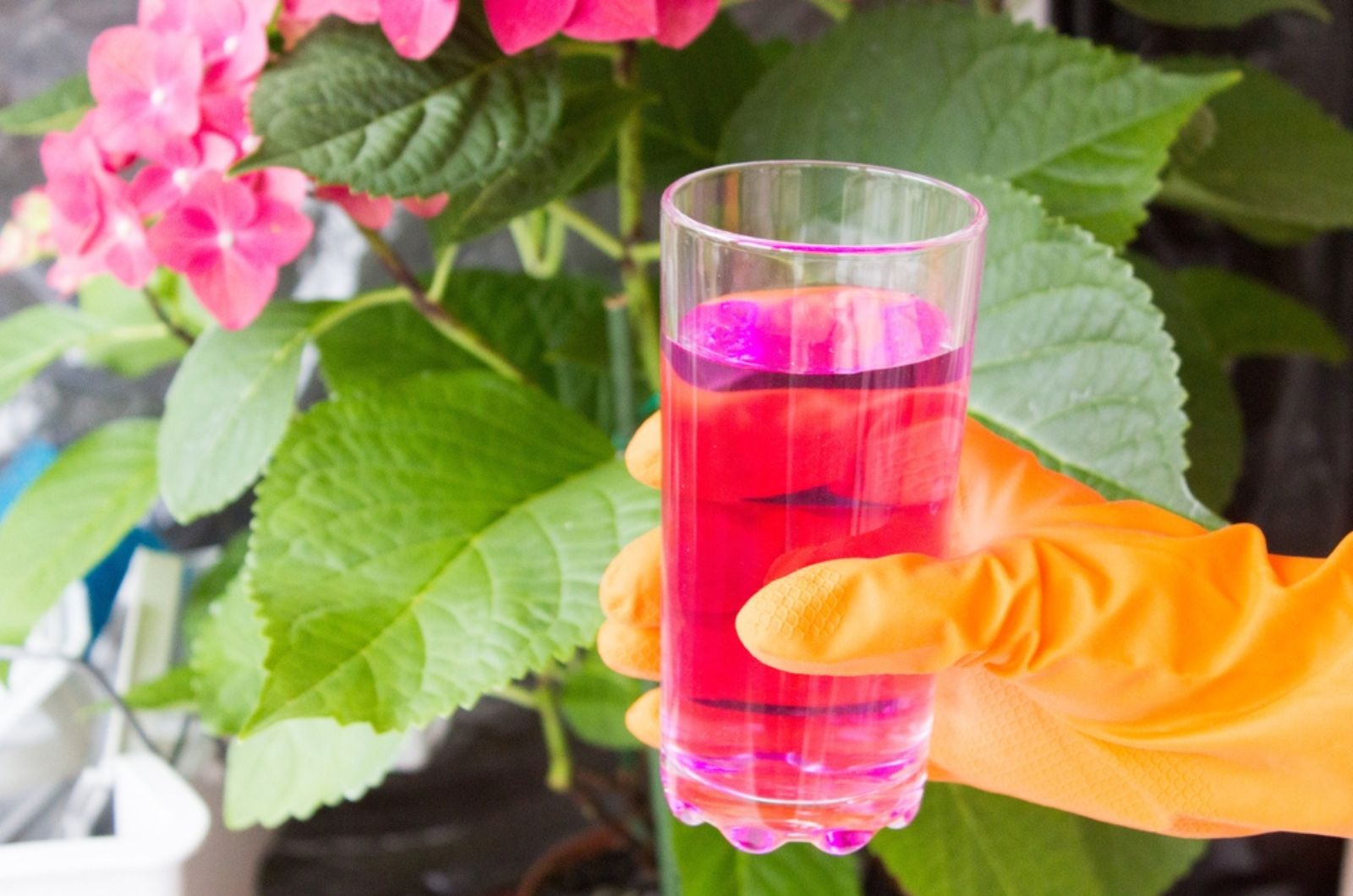There’s no shrub quite like the hydrangea. You can enjoy the pompom flowers for a long time, attract numerous beneficial insects with them, and change their color if you don’t like it.
They’re also easy to care for and will look their best with just a little attention.
If you have hardier varieties in your garden, here are some things you should do now to protect them from harsh winter conditions and prepare them for blooming the following spring.
Let’s get started!
3 Important Fall Hydrangea Jobs
These three jobs will help you prepare your hydrangea shrubs for winter and keep them safe until spring.
#1 Frost Protection
When we look at the hydrangea growing guide, we can see that these plants are hardy in USDA zones 3-9. Although, smooth, panicle, and many climbing hydrangeas are generally hardier than other varieties.
And yet, if you live in cold climates, you should protect these bushes from harsh frosts. Wrap them in burlap or use straw, leaves, and even pine boughs if you have them on hand.
#2 Mulching
Hydrangeas are shrubs that like well-drained, yet moist growing medium. And if you’re dealing with an unexpectedly dry fall, you can mulch these bushes to help your soil retain more moisture.
Apply 2-4 inches of organic mulch and you’ll be able to reduce your watering chores. Just make sure not to apply mulch all the way to the stems because the moisture it retains will cause them to rot.
Mulching will also insulate the soil and keep your hydrangea roots warm during winter, helping it combat frost damage.
Finally, laying mulch around your hydrangeas is an excellent way to prevent the emergence of weed grasses. This will significantly reduce the amount of work you have to do in your garden.
#3 Acidifying Soil
The last thing I always recommend doing in fall considers blue hydrangeas, and it is acidifying the soil.
You can change the color of some hydrangeas by making the soil more or less acidic. In neutral and alkaline soils, hydrangeas can be purple, pink, and red, while they obtain blue shades in acidic soils.
Many gardeners make the mistake of acidifying their soil in spring, but this process takes time.
You can add sulfur this fall and the microbes in the substrate will slowly break it down, reducing your soil pH levels by the next growing season. (1)
Also, acidifying your soil in fall gives you enough time to test it and apply more sulfur if needed.
2 Fall Hydrangea Jobs You Should Avoid
Although many recommend pruning and fertilizing hydrangeas in fall, these are some of the jobs that you should avoid.
Here’s why!
#1 Fertilizing
I’ve seen many growers advising to fertilize your hydrangeas in fall, but you should actually avoid this at all costs.
This can encourage your plant to produce new growth, which won’t have enough time to mature and harden. It will be vulnerable to cold damage and most likely die when exposed to harsh frosts. And this can put your entire plant in danger of more frost damage.
I understand that many beginner growers want their hydrangeas to look their best, and when they see yellowing and wilting leaves in fall, they want to give their shrubs a light feed.
But don’t be afraid of these changes. It is just a sign that your bush is entering dormancy and it will spring right back up come spring.
An even bigger problem when fertilizing hydrangeas, whether in fall or spring, is using the wrong fertilizers. You should strive for well-balanced plant food or at least one which has a higher phosphorus and lower nitrogen content.
Here is more detailed information about fertilizing hydrangeas in fall:
#2 Pruning
Oakleaf, climbing, mountain, and bigleaf hydrangeas are on the list of plants you should avoid pruning in fall. That’s because they flower on old wood and set their buds until fall, and trimming them at this time would remove them, giving you little-to-no blossoms the following season.
You should prune these hydrangea varieties in summer, right after they finish blooming.
But if you have smooth and panicle hydrangeas, you can give them a light trim in fall. However, you should do it early on so that the frost doesn’t damage the wounded stems.
Or your plant could produce new growth that would be too tender for the harsh winter weather. It would probably die in these conditions, creating an opening for more cold damage to your shrub.
Also, unpruned hydrangeas provide shelter for wildlife and protect the crown of the plant from freezing.
Prune them in spring or late winter and everyone should be happy!
References:
1. Hoidal, N. & Klodd, A. (2021). Does Your Soil Have a High pH? Fall Is the Best Time to Amend It. UMN Extension: Fruit and Vegetable News.



